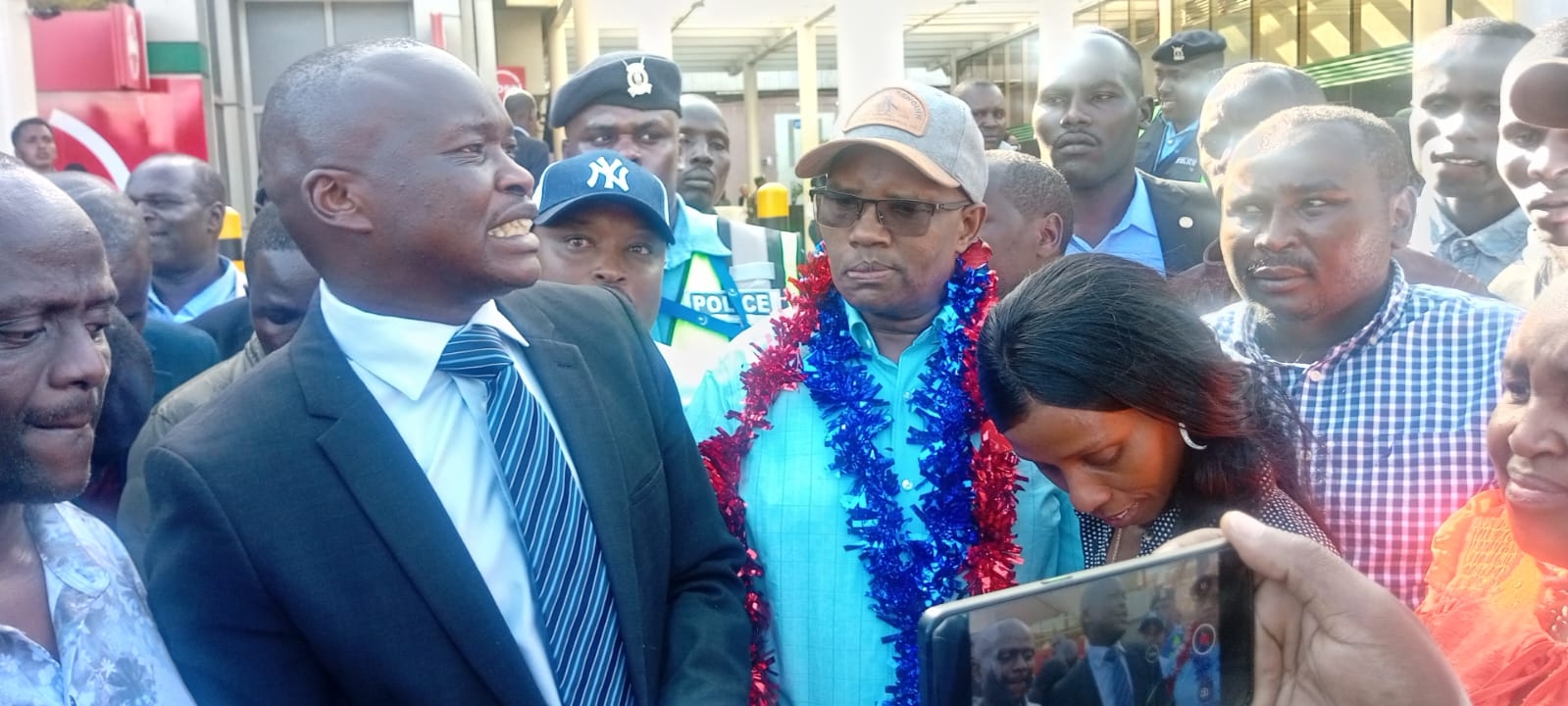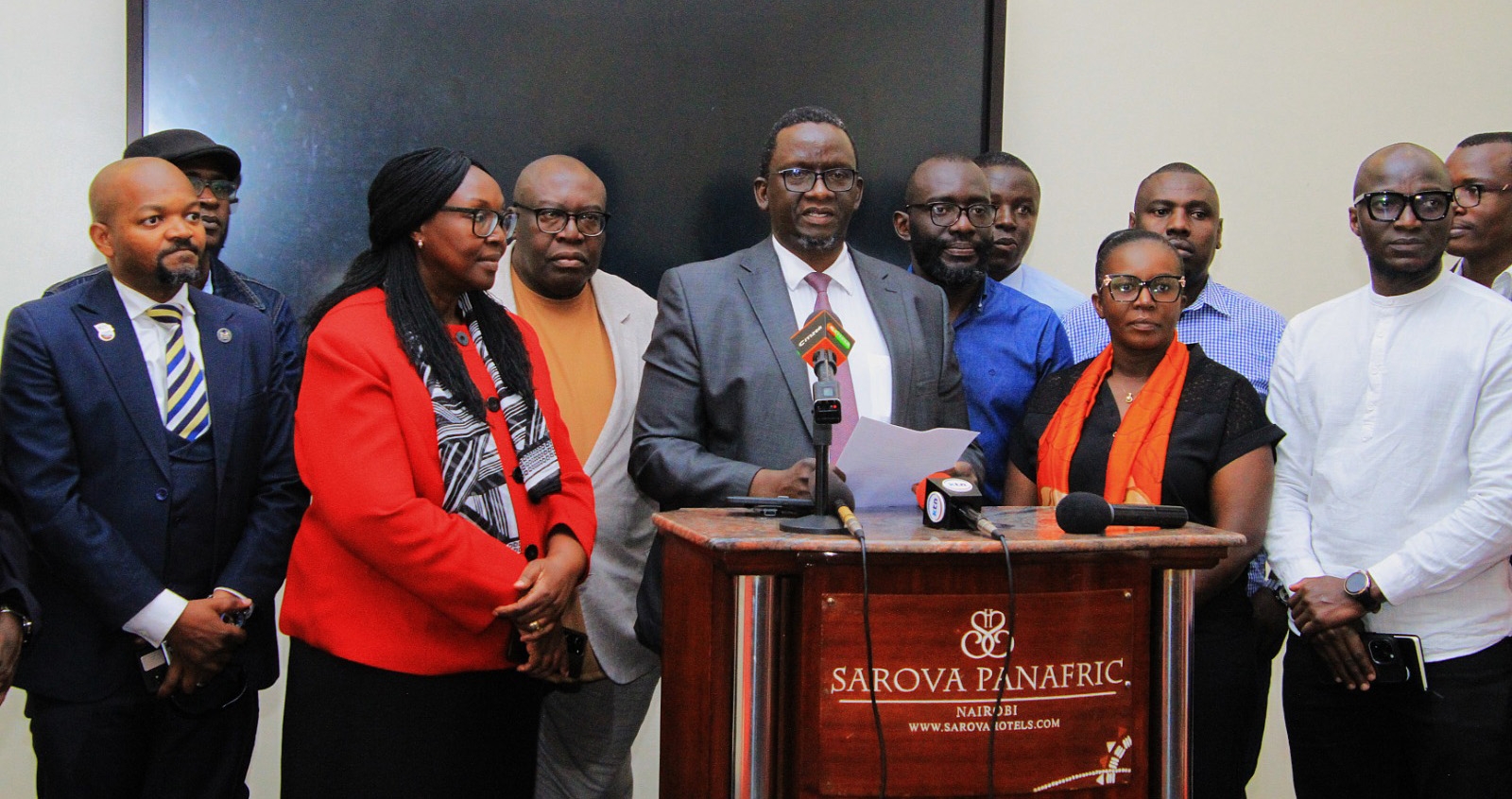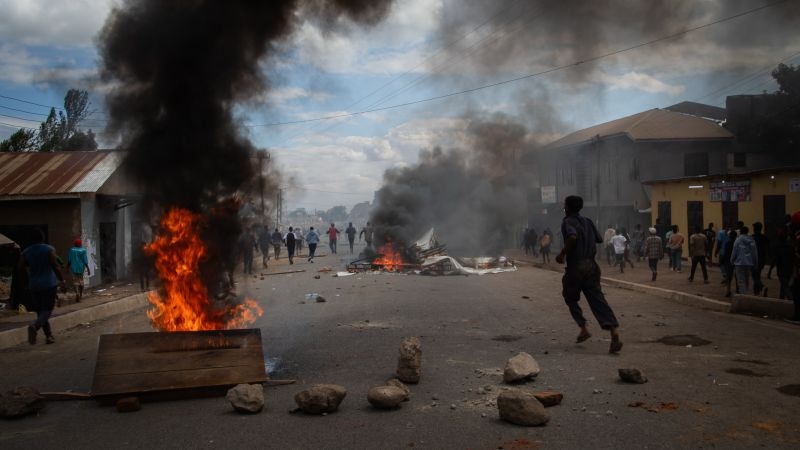There has been concern that Ndakaini Dam might spill and cause a flood. However, Job Kihamba, the Dam Coordinator was calm on Wednesday. He sees the large amount of water largely as a benefit.
“We had predicted we’d be full by December 12, but we have now extended it for four days because the intensity of the rain has gone down,” said the Nairobi City Water and Sewerage Company employee.
On Wednesday, December 11, the dam stood at 94.14% full, the level of the water at 2,039.62 metres above sea level. The water starts to spill when it reaches 2,141 metres. "So we have 1.5 metres to go," Kihamba explained.
He said spilling was nothing new and that in 2013 the dam spilled for 70 days. "The message to the community below is that the dam is about to spill. We spread this through local chiefs, police and the Red Cross." He does not anticipate large problems for adjacent communities.
"Culturally people do not live next to the river, and the steep topography allows it to rise but keeps it confined. This is different from flatter areas like Machakos or Kitui where if there is an increment of one metre in the river, it can spread quite far."
"The spillover will equal the amount that the dam is recharging by, and it will last for maybe three weeks," he said. "It will just be the same amount of water that the communities were used to spilling over in 2014, 2015 and 2016."
There was no spilling in the following two years – 2017 and 2018 – due to low rainfall, and water levels in Ndakaini dam hit a historical low of 21 percent on 30 April 2017. "That was when we had had no rain in March or April," says Kihamba. “It only rained in May. At our best in 2017 we only reached 37.98 percent - in December 2017."
The dam coordinator said that the dam is designed to augment another river system downstream, releasing and retaining water depending on the season.
"January, February and March it is normally a dry spell, so we utilize water from the dam. April, May and June usually see a lot of rain, so we shut off the dam and harvest from the rivers. Then July, August, September are dry, so we open the dam. Then October, November and December it rains, so again we close the dam and use what is in the rivers."
The team running Ndakaini have taken advantage of the above normal rain in 2019 to fill the dam to its maximum. "The rains to me are a blessing even if they have caused havoc," says Kihamba.
Ndakaini has two ways to spill its water, first, a concrete circle within the reservoir, down which water would flow as though down the hole of a bathtub, and, second, a large grassy emergency spillway that has never been used since the dam was built in 1991.
Ndakaini collects water from a catchment of 75 square kilometres that includes Kimakia and Gatare natural forests in the East Aberdares. The Thika, Githika and Kayuyu rivers drain into the dam, which was built in 1991. About 84 percent of Nairobi’s water comes through the Ndakaini-Ng'ethu system.
Sasumua Dam, in contrast, has a catchment of 150 square kilometres, was built in 1956, and provides 11 percent of the city’s water, which mostly comes from surface runoff. Another 4 percent comes from Ruiru dam and 1 percent from Kikuyu Springs.
Sasumua has been spilling since 21 November, says Dam Coordinator Joshua Nzifu. “We are completely full at 100 percent. We are 41.4 m deep at present; water is at 2,496 metres above sea level.”
"The rain has been huge - 2,037 mm so far, and we expect 2,500 by the year’s end. This is in comparison to 1,722 mm in 2015, 1,128 mm in 2016, 1,229 mm in 2017 and 1,532 mm in 2018. It’s not bad. The only challenge we have is turbidity due to sediment from farmlands. We have to spend more on chemicals like aluminium sulphate, to coagulate it."
Nzifu says overflow from the dam does not cause flooding because Sasumua river runs through deep valleys, much of which are forested. “There is no cause for alarm. Water from this side goes through forest and is slowed down. It meanders."
Ndakaini is "currently detached from the city right now," he explains. "But Sasumua is designed to always supply water directly from the dam to the city, mostly to Langata, Westlands and the Kenya Defense Force area."
Like Job Kihamba at Ndakaini, the Dam Coordinator of Susumua is pleased that his dam is full. "We can go six months using the full dam."
Both dams depends on the health of their catchments. Ndakaini is largely steep hilly tea country. Efforts are being made to plant more and different trees, particularly avocado and other fruit species, which will never be felled for timber, protect against erosion and promote infiltration of rainwater into the ground.
In the Sasumua catchment, where farming focuses more on cabbages and carrots, cultivation on riverbanks is a challenge. "We plant trees there," says Nzifu, "but farmers have a notion that their land goes up to the middle of the river".
The Nature Conservancy, which leads the Nairobi Water Fund, a multi-entity effort to protect the landscapes that supply the city, is distributing grass and apple and other trees.
















